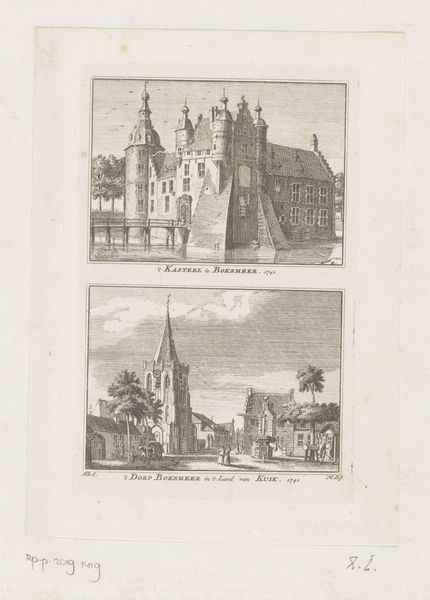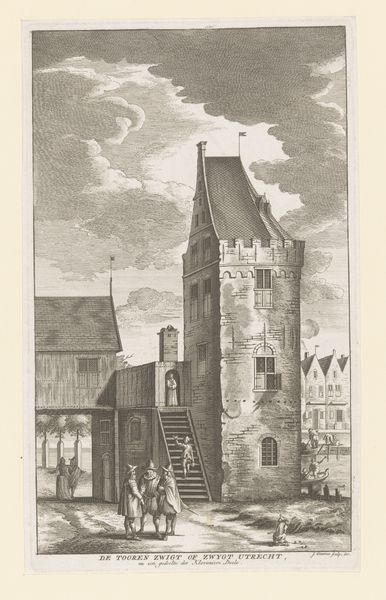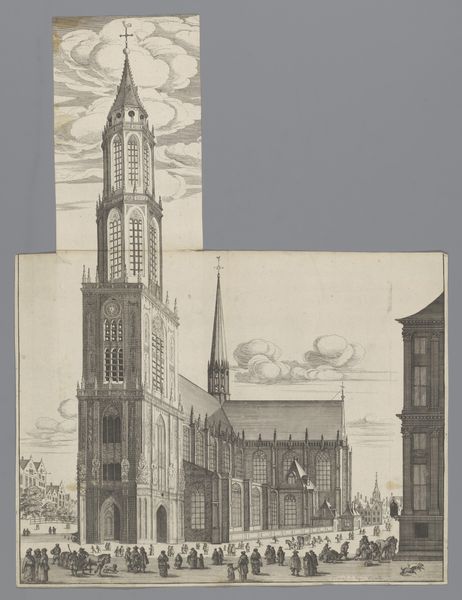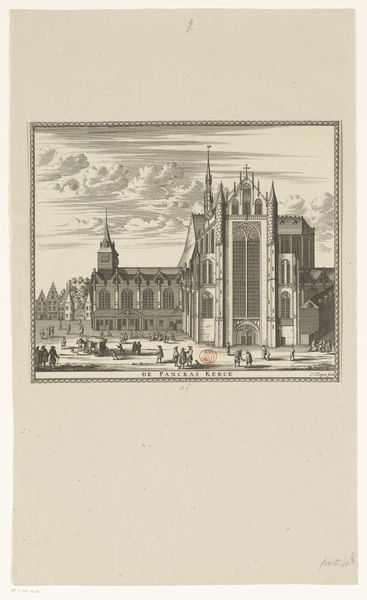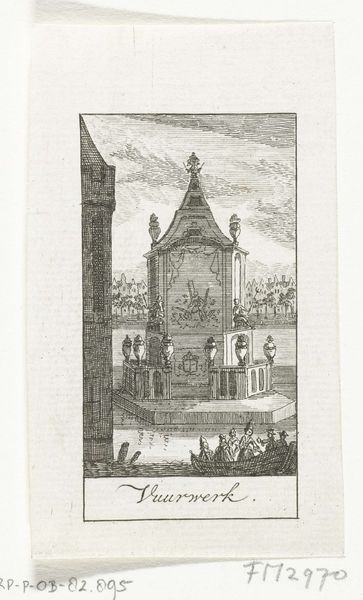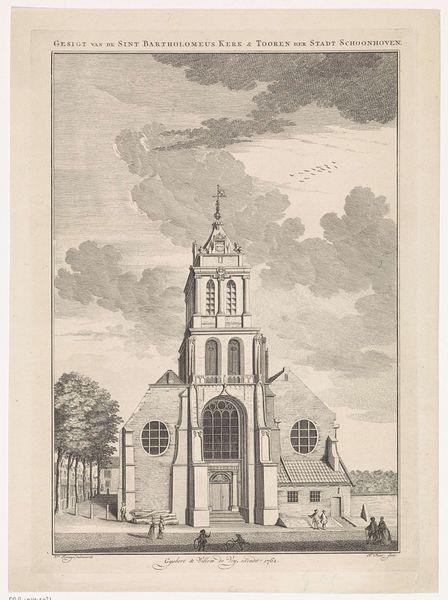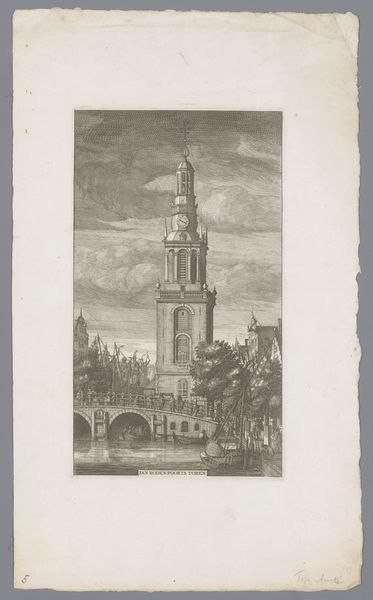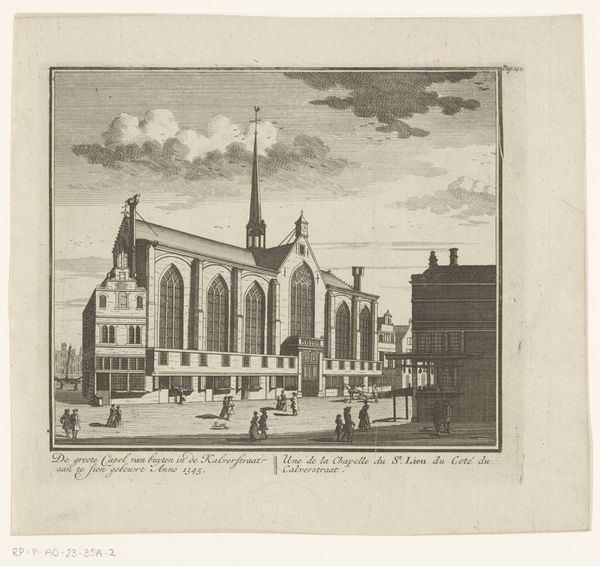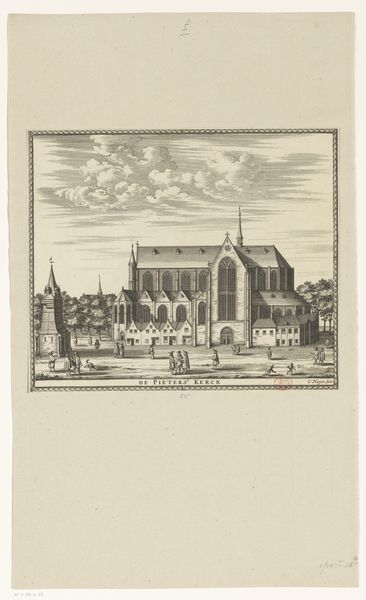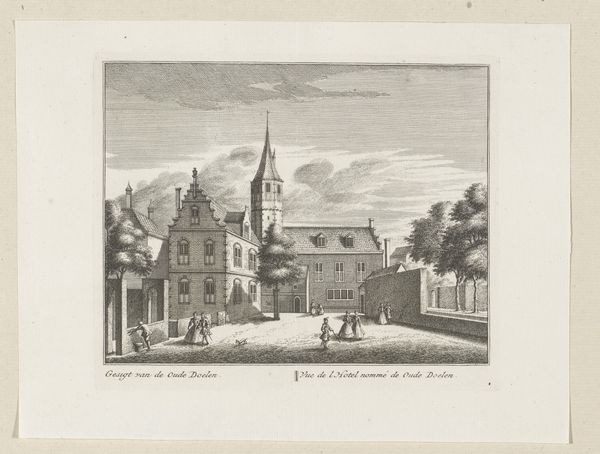
Dimensions: height 303 mm, width 184 mm
Copyright: Rijks Museum: Open Domain
Editor: Here we have Jan Punt’s “View of the Town Hall in Schoonhoven,” from 1762. It’s a very detailed etching, almost architectural in its precision. There's a starkness to it, despite the presence of figures and a horse-drawn cart in the foreground. What can you tell me about its place in art history? Curator: It’s important to consider the socio-political context of cityscape etchings like this one. The late Baroque period saw a rise in civic pride and the desire to document and celebrate urban spaces. Etchings were easily reproducible, allowing for the widespread dissemination of these images. Do you think this print served a documentary function, an aesthetic one, or something else? Editor: Probably a bit of both? It definitely feels like a record, but the artist also took care to make it visually appealing with the figures adding some life to the scene. Curator: Precisely. These images weren't just neutral records. They served to legitimize civic power by presenting a carefully curated view of the city. Consider where this print would have been displayed – likely in the homes of wealthy merchants or government officials, reinforcing their connection to and pride in Schoonhoven. Does knowing that change how you view it? Editor: Definitely. I hadn’t thought about it as a tool of civic power, but that makes perfect sense given who likely commissioned and consumed it. Curator: And think about the message conveyed – order, prosperity, civic virtue, all encapsulated in the representation of the town hall. These were powerful statements in a time of shifting political landscapes. Editor: I see the print in a totally new light now, moving away from pure aesthetics to seeing it as an instrument of social and political expression. Thanks for the insight!
Comments
No comments
Be the first to comment and join the conversation on the ultimate creative platform.
